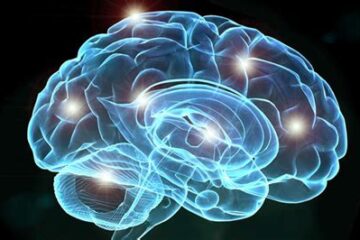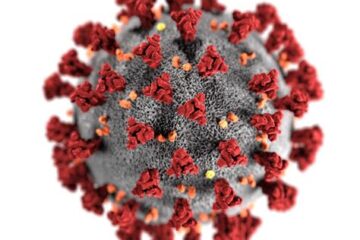
Disconnect between improvement in musculoskeletal disease and mental health @ יואל קסלר
In this post " Disconnect between improvement in musculoskeletal disease and mental health @ יואל קסלר" we reprint new data from JAMA Network which shows the complexity in the bidirectional nature of physical disease , pain , and loss of function and associated anxiety and depression.
בפוסט זה "ניתוק בין שיפור במחלות שרירים ושלד ובריאות נפשית @ יואל קסלר" אנו מדפיסים מחדש נתונים חדשים שמהם מראה את המורכבות בטבע הדו-כיווני של מחלות גופניות, כאב, ואובדן תפקוד וחרדה ודיכאון נלווים.
In this article by Wei Zhang, PhD1; Som P. Singh, BA2; Amdiel Clement, BA3; et al in JAMA Network they found that there had to be substantial improvements in physical function and pain scores from patients before there was any clinically important decrease in comorbid anxiety. Additionally, no amount of improvement had an impact on depression scores. The full article can be found here. The abstract is reprinted below.
"
Physical and mental health have a complex bidirectional relationship. There is a high prevalence of comorbid physical and mental health impairment from conditions such as musculoskeletal disorders, anxiety, and depression, and patients seeking musculoskeletal care who have coexisting symptoms of anxiety and depression report more physical limitations and worse pain interference (ie, “consequences of pain on relevant aspects of a person’s life…including hindered engagement with social, cognitive, emotional, physical, and recreational activities”1) than those who do not.2–13
Mental health treatment for anxiety and depression can secondarily improve patients’ physical function and reduce their pain-related limitations, but the reverse phenomenon has not been as well investigated.14–19 That is, among patients seeking care for musculoskeletal conditions, there is mixed evidence regarding whether treatment of physical conditions is associated with spontaneous improvement in mental health symptoms.20–22 Currently, musculoskeletal clinicians and patients often focus on the treatment of physical concerns, with the hope that mental health–related symptoms will naturally improve as physical health improves.23,24 This practice may in part be related to unique barriers to accessing mental health care, such as societal stigma regarding mental illness, a lack of financial accessibility to mental health care, and a global shortage of mental health professionals.25–27 Furthermore, the structure of medical training is such that clinicians who subspecialize in treating physical impairments do not routinely receive training in addressing the mental health–related contributors to and sequelae of physical and pain-related impairments.24,28
Musculoskeletal clinicians also have discrepant opinions regarding whether addressing patients’ mental health falls within their professional role.24,28,29 Some musculoskeletal clinicians are interested in additional resources to better address mental health within the musculoskeletal care setting,30 but acquisition of these resources has remained challenging without widespread agreement regarding the need for this investment.28,29,31 A better understanding of the associations between physical health and mental health changes can guide musculoskeletal clinicians in: (1) the importance they place on addressing mental health–related symptoms as a component of their patient care, and (2) how they counsel patients regarding expectations of their symptom trajectory as their physical impairment is addressed.
The goal of this study was to determine whether, among patients seeking musculoskeletal care, self-reported improvements in physical function and pain interference are each associated with meaningful improvements in self-reported symptoms of anxiety and depression. We hypothesized that clinically meaningful improvement in physical function and pain interference would each be associated with significantly improved symptoms of anxiety and depression."
Key Points
Question Among patients seeking musculoskeletal care, are improvements in physical function and pain interference associated with meaningful changes in symptoms of anxiety and depression?
Findings In this cohort study of 11 236 US adults seeking musculoskeletal care, improvement by 2.3 population-level standard deviations (SD) or more on PROMIS Physical Function or 1.2 SD or more on PROMIS Pain Interference were required for any association with meaningful improvement in anxiety symptoms. Improvements in physical function and pain interference were not associated with meaningfully improved depression symptoms.
Meaning These results suggest that clinicians and patients cannot assume that exclusively addressing the physical aspect of a musculoskeletal condition will improve symptoms of depression or potentially even anxiety.
Abstract
Importance Among patients seeking care for musculoskeletal conditions, there is mixed evidence regarding whether traditional, structure-based care is associated with improvement in patients’ mental health.
Objective To determine whether improvements in physical function and pain interference are associated with meaningful improvements in anxiety and depression symptoms among patients seeking musculoskeletal care.
Design, Setting, and Participants This cohort study included adult patients treated by an orthopedic department of a tertiary care US academic medical center from June 22, 2015, to February 9, 2022. Eligible participants presented between 4 and 6 times during the study period for 1 or more musculoskeletal conditions and completed Patient-Reported Outcomes Measurement Information System (PROMIS) measures as standard care at each visit.
Exposure PROMIS Physical Function and Pain Interference scores.
Main Outcomes and Measures Linear mixed effects models were used to determine whether improvements in PROMIS Anxiety and PROMIS Depression scores were associated with improved PROMIS Physical Function or Pain Interference scores after controlling for age, gender, race, and PROMIS Depression (for the anxiety model) or PROMIS Anxiety (for the depression model). Clinically meaningful improvement was defined as 3.0 points or more for PROMIS Anxiety and 3.2 points or more for PROMIS Depression.
Results Among 11 236 patients (mean [SD] age, 57 [16] years), 7218 (64.2%) were women; 120 (1.1%) were Asian, 1288 (11.5%) were Black, and 9706 (86.4%) were White. Improvements in physical function (β = −0.14; 95% CI, −0.15 to −0.13; P < .001) and pain interference (β = 0.26; 95% CI, 0.25 to 0.26; P < .001) were each associated with improved anxiety symptoms. To reach a clinically meaningful improvement in anxiety symptoms, an improvement of 21 PROMIS points or more (95% CI, 20-23 points) on Physical Function or 12 points or more (95% CI, 12-12 points) on Pain Interference would be required. Improvements in physical function (β = −0.05; 95% CI, −0.06 to −0.04; P < .001) and pain interference (β = 0.04; 95% CI, 0.04 to 0.05; P < .001) were not associated with meaningfully improved depression symptoms.
Conclusions and Relevance In this cohort study, substantial improvements in physical function and pain interference were required for association with any clinically meaningful improvement in anxiety symptoms, and were not associated with any meaningful improvement in depression symptoms. Patients seeking musculoskeletal care clinicians providing treatment cannot assume that addressing physical health will result in improved symptoms of depression or potentially even sufficiently improved symptoms of anxiety."
For more interesting articles like this check out our blog.


